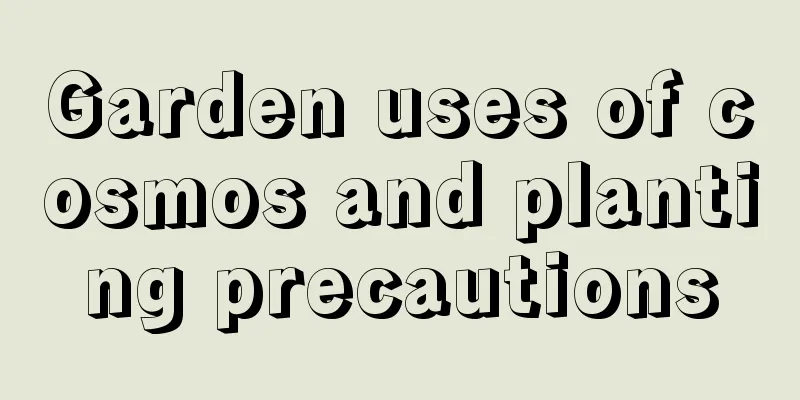What are the cultivation methods and precautions for tulips?

Tulip cultivation methodTulip is a plant of the Liliaceae family and the genus Tulip. There are two common methods of reproduction: sowing and bulb division. Tulips prefer a warm, humid and sunny environment. They have a certain degree of cold resistance and can withstand temperatures as low as minus 14 degrees Celsius. They are suitable for planting in slightly acidic sandy loam that is rich in humus, loose, fertile and well-drained. When planting tulips, you need to choose a suitable flowerpot, preferably with a diameter of 10-20 cm. You can put rubble, bricks and stones in the pot to increase drainage, and then add loose, fertile and well-drained soil. The soil should be new soil, and it is best not to use old soil to prevent infection by pests and diseases. Watering methodTulips need to be watered enough one week after being planted to meet the plant's water needs. When it sprouts, the water requirement will decrease. At this time, you can control the watering, especially during the flowering period. You should not water too much. Generally, you should water in small amounts and multiple times. Fertilization methodWhen tulips are potted, you can apply base fertilizer, apply thin fertilizer frequently during the growth period, and apply liquid fertilizer 1-2 times after two leaves grow. During its peak growth season, apply compound fertilizer once a week to fully supplement nitrogen, phosphorus and potassium elements, but stop fertilizing during the flowering period. After the flowers fade, you can apply potassium dihydrogen phosphate. Pruning methodsDuring the growth period of tulips, it is necessary to trim the dead leaves, dead leaves and yellow leaves in time, and also remove the dead flowers. This can reduce the loss of nutrients and make the plant more beautiful. Tulip cultivation precautions1. Tulips are prone to insect pests when maintained in an environment of high temperature, high humidity and poor ventilation. Management needs to be strengthened and ventilation needs to be frequent. Diseased plants should be removed promptly after discovery to reduce the spread of bacteria. At the same time, pesticides should be sprayed and ventilation should be maintained at all times. 2. In the early stage, in order to prevent tulips from growing too fast and causing leggy growth, we should increase the light for the tulips after they emerge to promote plant growth. After the flower buds are fully colored in the later stage, we should avoid direct sunlight to prolong their flowering time. |
<<: Should I use a large or small pot for growing wine bottle orchids?
>>: What are the cultivation methods and precautions of cyclamen flowers?
Recommend
Is it profitable to grow Chinese medicinal materials? Is it profitable to grow Chinese medicinal materials?
Is it profitable to grow Chinese medicinal herbs?...
Complete list of Phlox varieties
Phlox flower color classification monochrome Ther...
How to propagate mulberry trees and what to pay attention to
Mulberry tree reproduction method There are only ...
Caviar breeding method
1. Soil To grow caviar, you need to use loose, hu...
Benjamin Rose Advantages and Disadvantages
1. Advantages and disadvantages of Benjamin rose ...
The leaves of the fortune tree are yellowing, wilting and drooping...Teach you how to solve it in one minute
Leaves turn yellow and wither (Author: Must Point...
Precautions and pruning methods for red snowflake cultivation
Many people like to grow blue snow flowers . In f...
Where is Schisandra suitable for planting?
Schisandra chinensis planting area Schisandra chi...
How to fertilize Kalanchoe? Do these three things to absorb nutrients well!
1. Fertilizer selection: The Kalanchoe can be pla...
The placement and display of air plants
The placement and display of air plants Air plant...
Difference Between Asiatic and Oriental Lilies
1. Differences in the stems Asiatic lily is a per...
Pest Control for Succulents
Common pests Red Spider It mainly harms succulent...
Cultivation methods and precautions of Asparagus
1. Breeding methods 1. Potting soil: The material...
How to divide succulent plants
Time for succulent division Succulents are a type...
How to prune green beans? Pruning techniques and steps
Green bean pruning time You need to choose the ri...









